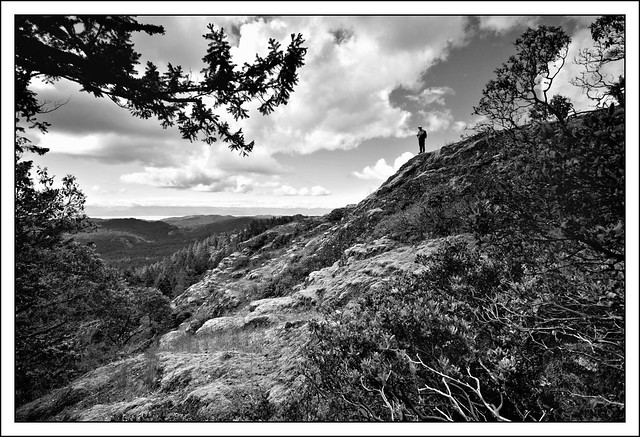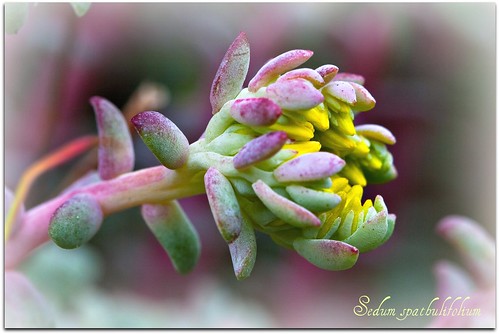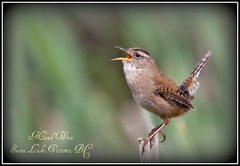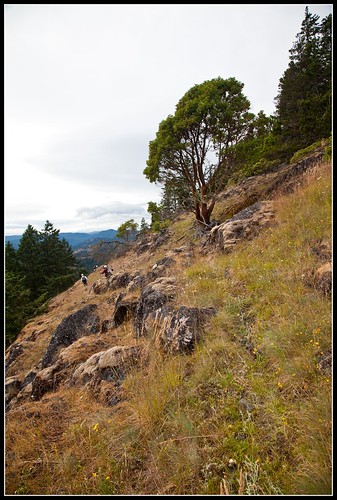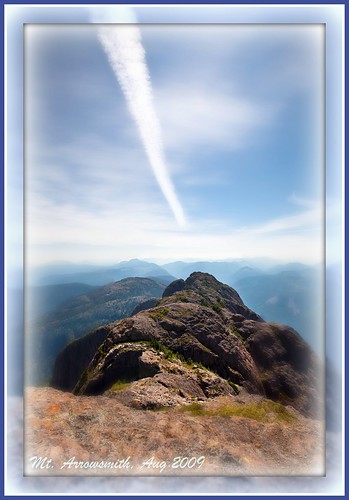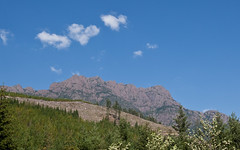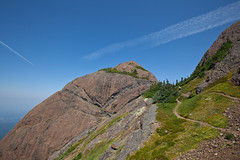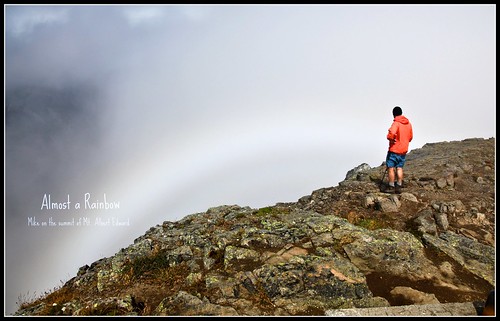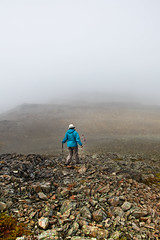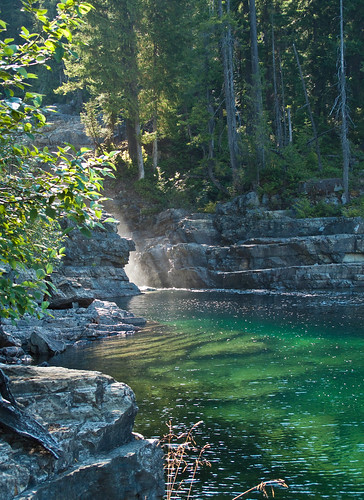This trip we were accompanied by Ian Cruickshank -- young birder extraordinaire. He is working with the British Columbia Breeding Bird Atlas and had not been in this area before. He got some good breeding info on Ravens and Nighthawks during this adventure and will be back again this summer to check out the area more completely.
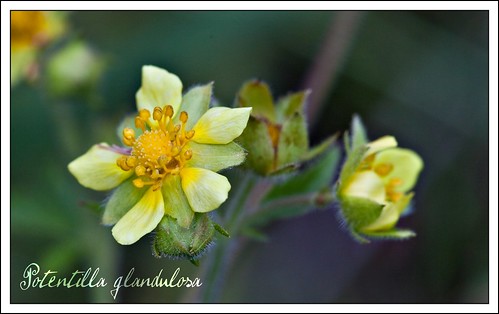 Our trip started with a climb up Mt. MacDonald via the eastern face. We had some interesting flowers here -- a batch of Sticky Cinquefoil Potentilla glandulosa in the Douglas Fir forest on the lower reaches, and wonderful displays of Stonecrop Sedum spathulifolium on the basalt outcroppings. Ian caught sight of an Olive-sided Flycatcher on the nest -- I can tell you , that takes a very good eye. Even with powerful binos and someone to point out the tree, these little nests are difficult to see.
Our trip started with a climb up Mt. MacDonald via the eastern face. We had some interesting flowers here -- a batch of Sticky Cinquefoil Potentilla glandulosa in the Douglas Fir forest on the lower reaches, and wonderful displays of Stonecrop Sedum spathulifolium on the basalt outcroppings. Ian caught sight of an Olive-sided Flycatcher on the nest -- I can tell you , that takes a very good eye. Even with powerful binos and someone to point out the tree, these little nests are difficult to see. After the summit we did Primus, Secundus, and Tertius Bumps. Between Primus and Secundus we were startled to discover that a huge road had been pushed into the draw between the two Bumps. Ian and I both enquired with CRD Parks and were told this was to be the new access road to the antenna farm at the top of Mt. MacDonald. The current access goes over private property, but this new road is entirely on CRD land. I'm sure this will ease any access issues the CRD might have with the private landowner. I only hope the CRD got a good price for the timber they took out for this road -- it looked to be prime Douglas Fir.
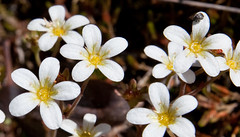 The route back down to the valley was interesting -- we went down on the north-west side of Tertius as we usually do, but this time there was no flagging to guide us. The marked trail is now heading down the south-west side. SW is a better path, but we wanted to pass by the quarry lake below Mt. Braden to check for interesting birds, so it was time to do a bit of route finding. With very little cussing we made it down to the Vietch Creek valley. We used one of the old logging roads to wind us back around to the flowline pipe, and from there crossed to Humpback Road through a friend's yard.
The route back down to the valley was interesting -- we went down on the north-west side of Tertius as we usually do, but this time there was no flagging to guide us. The marked trail is now heading down the south-west side. SW is a better path, but we wanted to pass by the quarry lake below Mt. Braden to check for interesting birds, so it was time to do a bit of route finding. With very little cussing we made it down to the Vietch Creek valley. We used one of the old logging roads to wind us back around to the flowline pipe, and from there crossed to Humpback Road through a friend's yard. This year's spring has been quite cool and wet, but there is an upside -- the flowers stay around much longer than normal. This year the Tufted Saxifrage Saxifraga caespitosa, Sea blush Plectritis congesta, Stonecrop Sedum spathulifolium, and Small-leaved Montia Montia parvifolia were prolific -- especially on the south-western slopes of Secundus. I have never seen such richness on these slopes.
